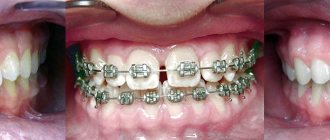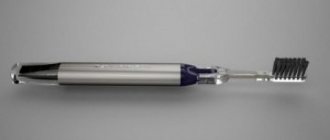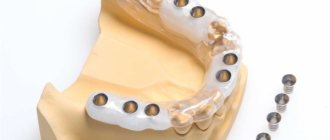Why aren't my teeth perfectly white?
Over time, teeth - even healthy and beautiful ones - tend to fade and darken. What reasons cause this phenomenon? The natural color consists of shades of several layers: blue-white tooth enamel, gray-yellow dentin and reddish pulp. When light passes through the enamel, the shades of these tissues add up to form the visible color of the teeth.
The tooth may darken due to food and drinks, while taking tetracycline-based antibiotics. Exposure to aggressive environmental factors increases the porosity of the protective layer, as a result of which the enamel also begins to absorb pigments. Deposits appear on the surface of the enamel and are not distinguished by their whiteness, and exposure to tobacco tar, smoke, coloring food and drink gives them an unattractive tint. Where can I deal with the problem of ugly teeth? Only in dentistry.
How to draw a tooth with a simple pencil
Drawing a tooth will be easy not only for adults, but also for children. A drawn tooth will help kids get rid of their fear of the dentist and, with the proper imagination of parents, will become the hero of many fairy tales that can be invented right in the process of drawing. Children better perceive information presented in a figurative or playful form, so with the help of such simple and funny pictures, adults can easily tell a child about how teeth work and why it is important to brush them, as well as prepare the baby for the inevitable first loss of baby teeth.
In order to draw a tooth, you will need:
- sketchbook or sheet of paper;
- regular pencil with black lead;
- eraser;
- sharpener (just in case).
It’s more convenient to break the process of drawing a tooth into several simple steps:
1. At the first stage, the left root of the tooth with a pointed tip is drawn. You can draw it with two separate lines, or you can draw it without lifting your hand.
2. The right root of the tooth is drawn, smoother and more uniform in thickness.
3. Next you need to draw the upper part of the tooth. Options are possible here, but it is better to focus on the given figure, where the surface of the tooth is drawn with three smooth lines. It is not necessary to connect them together - this will give the picture additional volume.
4. At the next stage, the details are drawn - several smooth lines parallel to the contour of the tooth, creating the effect of convexity and play of shadows.
The tooth is ready! To liven up the drawing, you can draw eyes on the tooth or color it. Colored pencils are not useful here, but you can show your child the shading technique - to do this, you need to sharpen the pencil lead a little and gently rub the graphite chips with your fingertip. Such a tooth will look very natural and not scary at all! If something doesn’t work out right away, you can use an eraser to remove unnecessary details - a simple pencil erases perfectly!
If you find an error, please select a piece of text and press Ctrl+Enter.
Photos of celebrities before and after dentist work
Many Western stars experienced serious problems with the beauty of their smile. In the photo accompanying the article you can see what they looked like before and after the dentists’ work:
- Actress Scarlett Johansson is forced to wear veneers. Now Scarlett has one of the most beautiful smiles.
- Matthew Lewis spent tens of thousands of dollars to make his teeth straight and white. Now Matthew Lewis's teeth are his pride.
- Miley Cyrus wore braces for a long time. This helped make her teeth look beautiful.
Domestic stars also surprise with their beautiful smiles:
- Dmitry Nagiyev is considered by many to be the standard of a stellar smile.
- Timati once amazed fans with “golden” dental overlays. Perhaps the rapper previously believed that men's teeth should be exactly like this.
- Ksenia Borodina managed to achieve a Hollywood smile with the help of veneers.
- At the same time, Bianca’s dentition, although healthy, cannot be called ideal.
- Some actresses managed to make funny crooked teeth their “thing”, for example, Keira Knightley and Vanessa Paradis.
- Kirsten Dunst and Laetitia Casta willingly show off their special smiles. Despite this, Laetitia Casta remains the idol of millions. You can see their smiles in the photo accompanying the article. However, Laetitia is the exception rather than the rule.
Consequences
The incorrect size of even single specimens can lead to deformation of the entire row of teeth, which in turn provokes the development of possible consequences.
Most often, pathologists note the following consequences :
- displacement of the anterior incisors in the distal direction. This result can only be observed if the lateral incisors are also small in size;
- violation of stability .
The small dimensions mean that there is no full contact between the side surfaces, which provided additional stability. Without constant support, the ligaments in the dental bed are stretched, causing the tooth to become mobile; - violation of speech functionality . With microdentia, a change in diction is often observed, whistling and hissing sounds are most pronounced;
- improper functioning of the temporomandibular joint . It is observed in a generalized form of the disease, due to improper distribution of the load during chewing and increased muscle tone in a separate area of the jaw;
- psychological discomfort , which is provoked by the presence of trema and diastemas;
- inflammation of periodontal tissue caused by bacteria accumulating in wide spaces between teeth and enlarging gum pockets when loosened.
What is such an anomaly in the number of teeth as hyperdontia, we will tell in a new review.
In the next article we will talk about cases in which macrodentia in a child is considered a deviation.
At this address https://orto-info.ru/zubocheliustnye-anomalii/zubov/polozheniya/krivyie.html you will find photos and recommendations on how to prevent the appearance of crooked teeth in children.
How modern methods are used for dental restoration in case of dimensional pathologies, watch the video:
How to make a “Hollywood” smile?
One of the indicators of a person’s success and health today is beautiful teeth. The smiles of Hollywood stars are considered the most beautiful. Models, singers, actresses constantly show off their even, snow-white, beautiful teeth from screens and magazine pages. Why do they have healthy teeth? What is the secret of Hollywood teeth? In fact, the beautiful teeth of all singers, artists, models and other celebrities are the merit of each of them’s personal dentist. It’s not enough to say, I want teeth like Nagiyev’s – it will take a lot of time, effort and money. If you resort to a number of procedures that are performed on stars, then anyone can boast of “Hollywood” teeth.
Teeth whitening
When creating a Hollywood smile, like a model's, you can't do without teeth whitening. To make your teeth beautiful and white, you can whiten them at home using folk remedies (activated carbon, baking soda, tea tree oil, etc.), or seek help from a dentist.
The doctor will suggest chemical or mechanical bleaching. Before ordering a whitening procedure, you should inquire about the degree of danger to the enamel - if the protective layer is damaged, this will lead to the development of dental diseases.
Veneers will help you achieve a snow-white smile
A veneer is a thin translucent “overlay” on a tooth that is secured to the outside of the tooth. This is an alternative to whitening. They visually mask unsightly teeth, and in order to correct the smile area, a few visits to the dental office are enough. It should be remembered that veneers perform a decorative function. Modern Hollywood stars choose Lumineers (Scarlett Johansson uses them) (we recommend reading: What are Lumineers and how are they installed on teeth?). They are distinguished by a number of advantages:
- ultra-thin,
- quickly installed,
- removable,
- do not require grinding of the supporting elements of the dentition,
- not subject to staining,
- can be fixed on artificial crowns.
Indications for removal
What to do if an adult has temporary teeth at the age of 30 is decided individually, after examination by a dentist. If the patient does not have any problems, the doctor will recommend leaving him. The confirmed absence of a permanent tooth germ is an additional argument in favor of preserving the existing temporary one.
READ ALSO: What to do if you only have 30 teeth at 30?
Healthy teeth are usually preserved, and to improve the aesthetics of a smile, the doctor may recommend microprosthetics with veneers or lumineers. If signs of carious or non-carious lesions are found on small teeth, they are treated in the same way as other teeth (we recommend reading: non-carious lesions of dental tissue: classification and treatment).
If a baby tooth is detected in an adult patient, the dentist will prescribe an x-ray examination. If the image reveals resorption of the roots and signs of imminent change, the doctor may insist on surgical intervention or not disturb the natural course of events.
Indications for milk tooth extraction in adults:
- Mobility of 3-4 degrees with radiographically confirmed root resorption. Movable small teeth are removed regardless of the presence of permanent tooth buds underneath them.
- Significant destruction of the coronal part with damage extending to the roots. With well-preserved roots, prosthetics are possible.
INTERESTING: the number of teeth of a healthy person
Correcting uneven teeth
In order for a smile to be truly “Hollywood”, the teeth must not only be snow-white, but also absolutely even. Few people are lucky enough to have an ideal dentition by nature, so they have to resort to procedures for correcting uneven teeth - using mouth guards, plates or braces (more details in the article: how and why is a dental plate installed?).
Braces
The most effective and reliable way to fix teeth is still considered to be the installation of braces. People wear such an orthopedic design for a long time - about 12-14 months, so the choice should be approached carefully. It is necessary to take into account not only the cost and beauty of the device, but also its convenience and efficiency, and select braces depending on the age of the patient.
Plate
Plates are traditional leveling systems and are recommended for use to correct a child’s bite. Plates can be installed starting from the age of 6 – when the first molars have already appeared. The use of the plate is also indicated during the rehabilitation procedure after wearing braces.
mouth guard
Mouth guards make it possible to forget about unsightly crooked teeth forever and straighten them securely, comfortably and almost imperceptibly. With this design, your teeth will become beautiful in not too long a time. In addition, using a mouth guard, it is possible to simultaneously whiten the teeth. This way you can make your teeth Hollywood much faster.
Prevention of gum disease
Preventing a disease is easier than treating it, especially after the disease becomes chronic, so preventive measures are important to maintain the health of the gums and the entire oral cavity. Among them:
- Daily hygiene, including actually brushing your teeth, using a special thread (floss) for interdental spaces, rinsing your mouth with refreshing solutions, and using tongue scrapers. Brushes, pastes and rinses are selected individually; may have a purely hygienic or therapeutic and prophylactic purpose (to reduce the sensitivity of the enamel, bleeding).
- Periodic visits to the dentist - preferably every 6 months, if there are no complaints and the gums are healthy. In addition to a general examination and care recommendations, it is advisable to undergo a professional cleaning procedure by a dental hygienist. To eliminate dental plaque, a combination of manual (mechanical removal with curettes) and hardware techniques is used, the most popular of which are:
- air-flow treatment – suitable for removing soft or small amounts of hard plaque. The enamel is exposed to a directed jet of a finely dispersed mixture of air, soda, and water under strong pressure. Used in children from 2.5 years old;
What does air flow look like? - ultrasonic cleaning – used to destroy hardened deposits, including those accumulated in gum pockets. It is produced by a device with a hook-shaped nozzle, through which ultrasonic vibrations are applied to the treated area, causing the destruction of plaque. Used in adults and children over 14 years of age.
Tips to help keep your teeth and gums healthy
In addition to hygiene measures, maintaining health in this area is facilitated by:
- Balanced diet. It should include products that are useful for maintaining dental health - dairy (cheese, cottage cheese, kefir), low-fat fish, fiber-rich vegetables and fruits that have not been heat-treated. You need to drink less strong tea and coffee, and give up sweet carbonated drinks. To compensate for the deficiency of nutrients, it is allowed to take correctly selected tablet forms of vitamins (A, C, E, D), microelements (calcium, phosphorus, fluorine).
- Refusal of bad habits - drinking alcohol, smoking, biting nails, and other hard objects (pens, seeds).
- General strengthening of the immune system by hardening, regular walks in the fresh air, doing gymnastics, maintaining a sleep schedule, and avoiding nervous overload.
Healthy gums and teeth are the key to a beautiful smile in photographs, as well as the absence of discomfort in life. Therefore, you need to carefully take care of them yourself, with the help of doctors if necessary.
How to draw a tooth if you are not an artist or a dental student
As you know, a person normally has 32 teeth. Each of them has a different shape, structure and purpose. The front ones are called incisors, followed by the canines and chewing teeth. Nature gave us incisors and fangs so that we could bite through our food, and molars, or wisdom teeth, so that we could chew it later. To understand how to draw a tooth, you need to understand a little about its internal structure.
How does a human tooth work?
Dental students are required to make enormous amounts of detailed anatomical drawings during their studies. But we will only look at the main parts of the tooth and move on to drawing. All of them have a crown covered with white enamel. Beneath it are hidden the inner layers - dentin, pulp and nerve. Long and strong roots grow deep into the jaw from the tooth: the front ones have one, and the distant ones have two to four.
How to draw a tooth with children?
In order not to go into anatomical details, for a child or a beginner, it is enough to remember the two main parts - the crown and the roots. The easiest way to draw a tooth is to imagine it in the shape of a heart with “legs.”
- Draw an elongated heart.
- Draw roots and legs to it.
This simple example is the easiest way to understand the general shape of a tooth. Later you can begin to draw in more detail.
How to draw a three-dimensional tooth?
In order to draw a human tooth correctly and proportionally, you need to approach the task more seriously. The best way to learn is by observation, and you can look at them up close in front of a mirror. If you look closely, you will notice that our teeth (at least real ones) have not entirely ideal and symmetrical proportions, as well as many bulges, depressions and irregularities.
Three-dimensional drawing is based on the play of light and shadows. Therefore, it is necessary to indicate a shadow in the recesses of the tooth, and show highlights on its convex parts.
In addition, do not forget about the roots. In nature, they are extremely rarely found in an ideal straight shape. Most often they have curves, and one of them is usually longer than the others. To maintain proportion, you need to remember that the crown of a tooth is usually half as long as its root, and in order not to make a mistake, you can use a ruler while drawing.
You should start drawing a tooth with the primitive forms described above. Gradually, you can add touches of texture, volume and realism. Drawing a tooth is quite simple, since it is one of those things that we encounter every day and can imagine with our own eyes.








